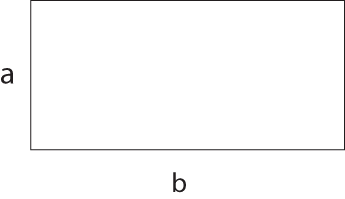Construction of a quadratic equation from its solutions
We are going to see now the way we can construct a quadratic equation when the solutions are known.
The solutions of the equation $$x^2+2x-3=0$$ are:
$$$\displaystyle x=\frac{-2 \pm \sqrt{4+12}}{2}=\frac{-2 \pm 4}{2}=\left\{\begin{matrix} x_1=1\\ x_2=-3 \end{matrix}\right.$$$
Now let's look at what happens when we do the product $$(x-x_1) \cdot (x-x_2)$$
$$$(x-1) \cdot (x+3)=x^2-x+3x-3=x^2+2x-3$$$We have returned to the original equation.
So "the product of $$x$$ minus a root multiplied by $$x$$ minus the other root is equal to the quadratic equation that has these roots as a solution".
If the solutions of the equation are $$x_1=4,x_2=2$$ the corresponding quadratic equation is:
$$$(x-4)(x-2)=x^2-6x+8=0$$$
If the roots of the equation are $$x_1=-2, x_2=-5$$ the corresponding quadratic equation is:
$$$(x+1)(x+5)=x^2+6x+5=0$$$
If the solutions of the equation are $$x_1=3, x_2= \displaystyle -\frac{2}{3}$$ the corresponding quadratic equation is:
$$$\displaystyle (x-3)(x+\frac{2}{3})=x^2-\frac{7}{3}x-2=0$$$
If the roots of the equation are $$x_1=0, x_2=16$$ the corresponding quadratic equation is:
$$$(x-0)(x-16)=x^2+16x=0$$$
Reconstruction of the quadratic equation from the sum and product of roots
We know that $$(x-x_1)\cdot (x-x_2)$$ leads to the equation that has $$x_1,x_2$$ as its solutions. If we do the product:
$$$(x-x_1)\cdot (x-x_2)=x^2-x_1x-x_2x+x_1x_2=x^2-(x_1+x_2)x+x_1x_2$$$
an expression in which appear the sum and the product of the roots, let's call them $$s$$ and $$p$$.
$$$s= x_1+x_2 \\ p=x_1\cdot x_2$$$
So the quadratic equation is:
$$$x^2-sx+p=0$$$
Write a quadratic equation knowing that the sum of its roots is $$5$$ and its product $$6$$.
We know that $$s = 5, \ p = 6$$, then the equation will be:
$$$x^2-5x+6=0$$$
This method is faster than doing the product of roots.
Let's see some other examples:
The quadratic equation that has solutions $$4$$ and $$9$$ is:
$$$x^2-13x+36=0$$$
The quadratic equation that has solutions $$-3$$ and $$-5$$ is:
$$$x^2+8x+15=0$$$
Let's say it is not easy to lay out an exercise that ends with a quadratic equation. The easiest way would be writing literally what the equation says.
If we want to get the equation $$x^2-5x+6=0$$ as a solution to a problem, we can formulate a statement like: If we raise an amount to the square and we subtract $$5$$ times this amount the result is $$-6$$. What is the value of that amount?
The following statement is clearly much more interesting: "Find two numbers knowing that their sum is $$5$$ and their product is $$6$$" , a statement that ends with the same equation and whose solutions can be found solving the proposed equation:
$$$\displaystyle x=\frac{5 \pm \sqrt{25-24}}{2}= \frac{5 \pm 1}{2}= \left\{ \begin{matrix} x_1=3 \\ x_2=2\end{matrix} \right.$$$
With these same values we can approach it geometrically.
We know that the perimeter of a rectangle is $$10$$ and its area $$6$$. Calculate the sides of this rectangle.

The perimeter of a rectangle is the sum of all its sides, then it is $$a+a+b+b = 2a + 2b= 2(a+b) = 10$$, that is, $$a + b = 5$$
On the other side, the area of the rectangle is $$a \cdot b = 6$$.
Then, to solve this problem we have to solve a quadratic equation in which the sum of its roots is $$5$$ and its product $$6$$. This equation is $$x^2-5x+6=0$$.
And the solution is:
$$$\displaystyle x=\frac{5 \pm \sqrt{25-24}}{2}=\frac{5 \pm 1}{2}$$$
Then, the sides of the rectangle will be, $$a = 2$$ and $$b = 3$$
